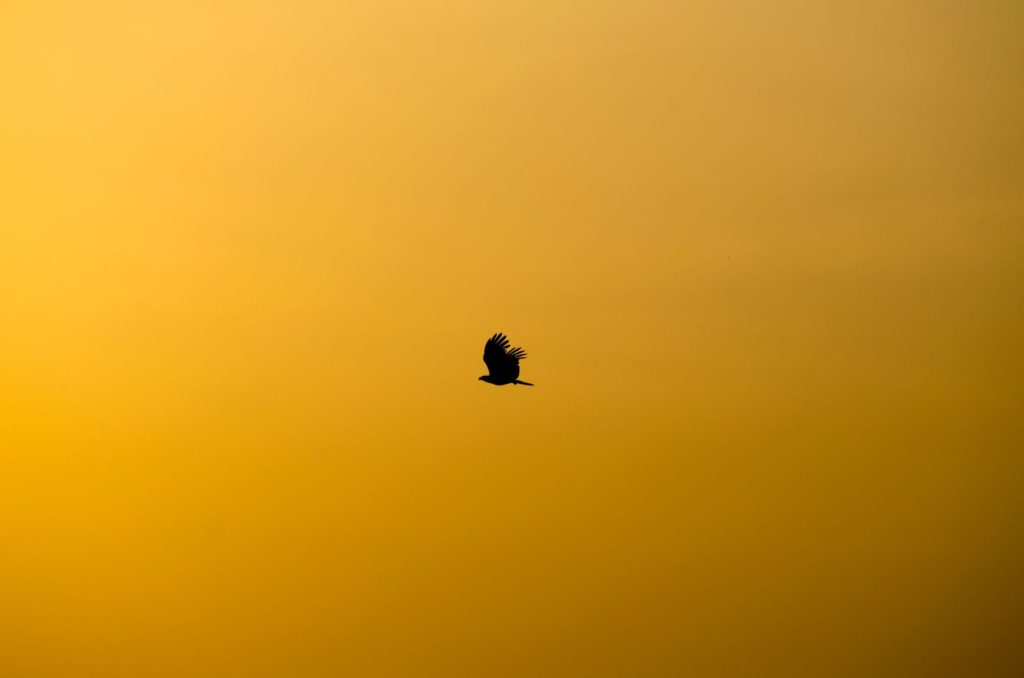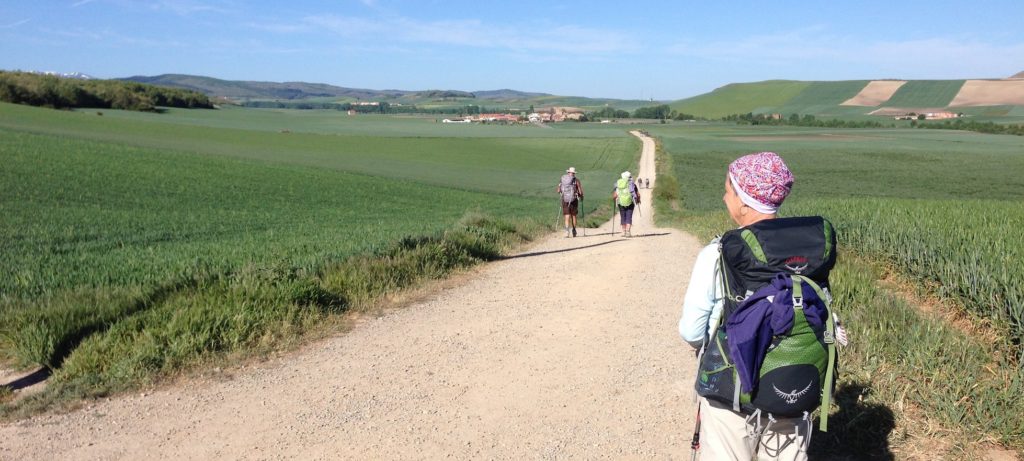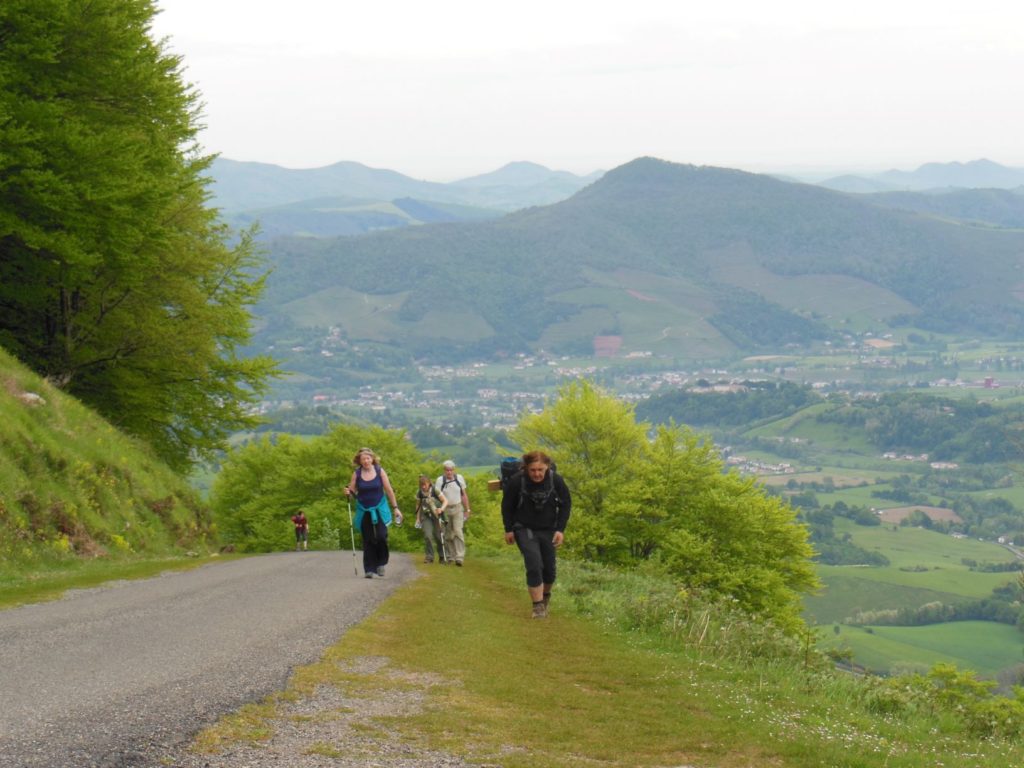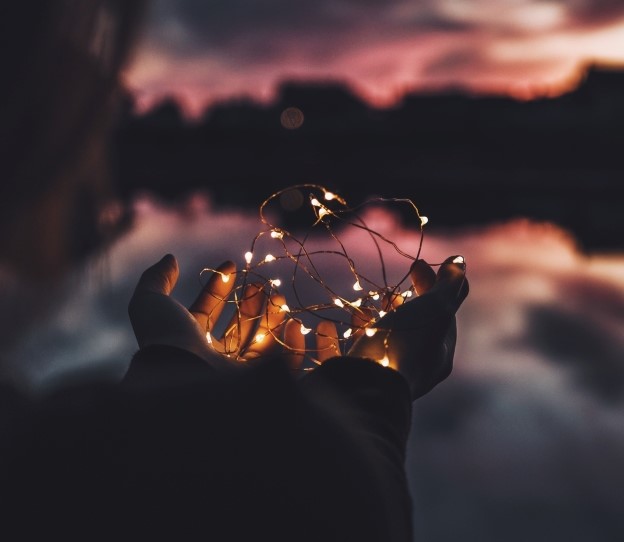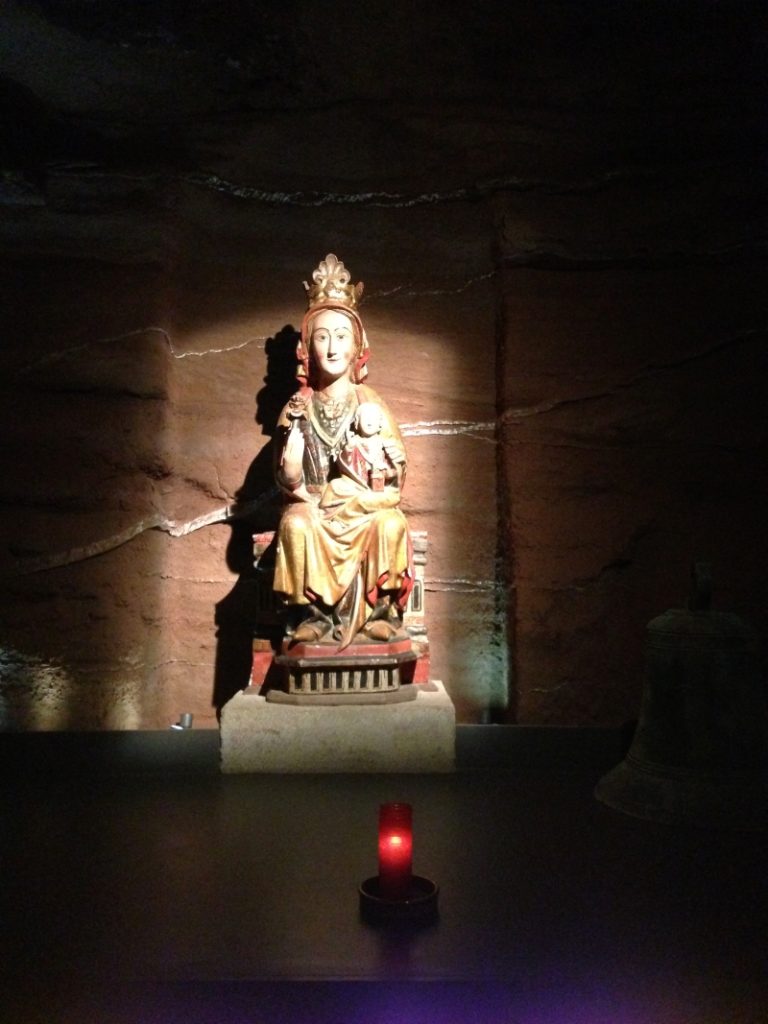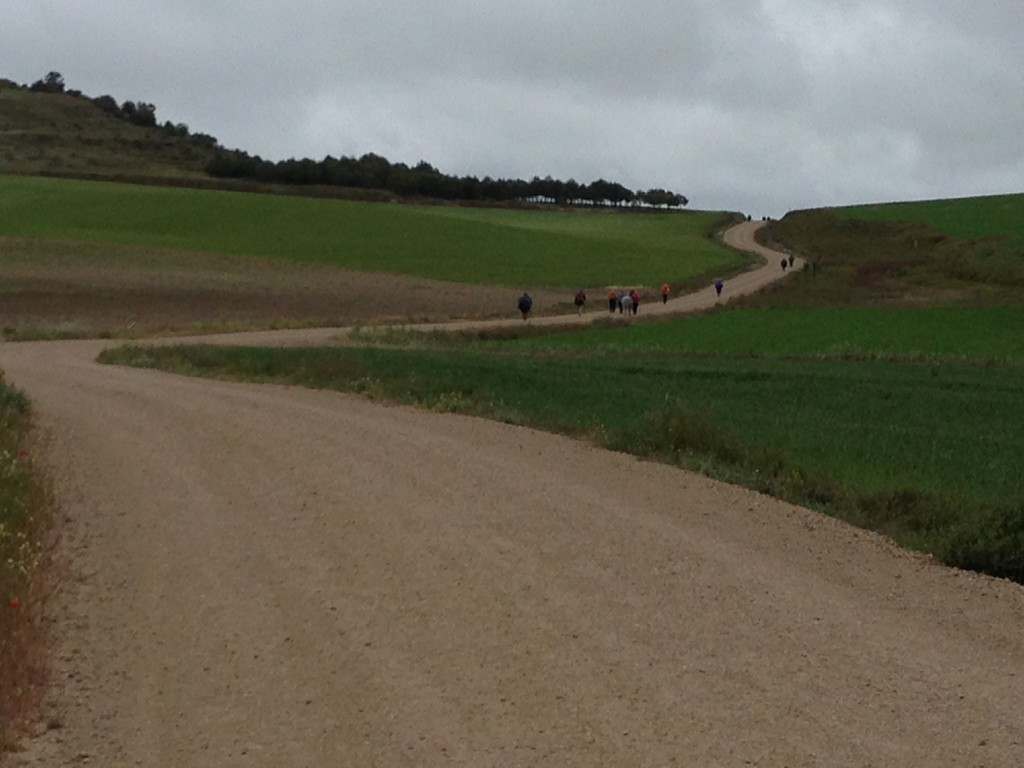
It’s another rainy day in Spain. May 22, 2014. Day 17 of what will ultimately be 37 days walking El Camino de Santiago, 500 miles across Northern Spain. I’m walking alone. Jed stayed behind in the last village to buy bocadillos for lunch. He’ll have no problem catching up with me. This rain is incessant. This rock and mud Camino feels endless, Santiago a fantasy. My feet hurt. I’m sick and tired of being wet and cold. I’m sick and tired of sharing sleeping quarters with twenty strangers. I’m sick and tired of anticipating another damn albergue bathroom, hoping there will be enough hot water to get clean and that the lights won’t go out mid-shower. I’m putting one sore foot in front of the other.
I am not having fun.
But then. Then comes a moment that changed my life, a moment I will never forget.
I’m suddenly aware of a presence deep in the ground below me. I feel connected to this presence. It feels like a heart. Or a uterus. The beating heart connection between my heart and Earth’s heart feels deeply good. I know that every single pilgrim around me, slogging up the muddy hill in the Spanish rain, is also connected to this deep wombish heart. I know this deep heart is supporting, nourishing, and loving each of us. I know that every single thing is attached through this deep uterine heart to everything else, and every single thing is loved. I know this is true.
Unfortunately, this God is not the God I meet in church. The patriarchal church God is male, unchanging, spiritual, “up there” somewhere, worried about sin, and far removed from that fiercely loving muscular presence down in the dirt that I felt on the Camino. Church God and Camino God are incompatible.
I have a choice. I can take my knowing seriously. Or, I can continue to try to make myself fit into the church box, and continue to give away my power and authority over my own theology.
I choose to take my knowing seriously. After decades of contorting myself and denying what I know to be true, I choose to leave church. This moment on the Camino isn’t the only moment of truth. It’s just the one that gets me to take action.
Leaving hasn’t been easy. My “coming out” story did not sit well with some parishioners. Since I want everyone to like me, their disapproval feels mighty uncomfortable. 🙂
(I want to say again that my loving husband has done everything in his power to make church not hurt for me and for women like me. Clergy can only go so far within the constraints of the church institution. And the institution appears unwilling to change.)
No one’s forcing you to accept the tradition as it’s been handed to you. You will not die if you choose to lay that burden down. Jesus will still be Jesus, if you want him to be. Sisters, religion has been invented by institutions which don’t prioritize our well-being. If they did, they’d listen to us when we tell them it hurts, and be willing to evolve. Religion is constructed. It can be critiqued, deconstructed, and reconstructed as necessary.
You are perfectly capable of doing your own theological work.
Here’s one way to begin. (If you’ve gone through my Coaching Intensive, this will be familiar.)
Step One:
Fill in the blanks of this sentence:
If “God” is ____________, then I am ____________, and my soul is ___________.
Some examples:
You’ll notice these examples are flesh and blood, dirt and rock. We are Earthlings, and our metaphors work best when they’re earthy.
- If “God” is water, then I am a spring, and my soul is the connection the water flows through.
- If “God” is a womb, then I am a child of God, and my soul is an umbilical cord.
- If “God” is dirt, then I am a tree, and my soul is where my roots touch the dirt.
- If “God” is an artist, then I am a work of art, and my soul is the part of me that grows and changes with each stroke of the divine paintbrush.
You likely have many metaphors for God/Divine Energy/Holiness. Use them all. Play around. Try them on. Feel into your body for the ones that feel true. You decide.
Step Two:
Choose one of your sentences and find or make a tangible expression of it. Put that reminder on your altar. If you don’t have an altar, put the reminder somewhere you will see it regularly. You could find a photo online of your metaphor. You could draw your metaphor. You could find or make a sculpture of your metaphor. Go beyond the word. Create something you can hold in your hands.
Step Three:
Visit your metaphor regularly. Sit with it. Ask questions, and listen for answers.
This work starts when you accept the responsibility to do your own theology. You are smart enough. You are brave enough. You have everything you need.
You get to do this work.
PS. Fall Semester is coming! I’m opening enrollment for all programs starting mid-September. Now’s the time to get on my schedule for a Clarity Call if you’re interested in working together. More information will be coming soon, so make sure you’re subscribed for weekly updates.

